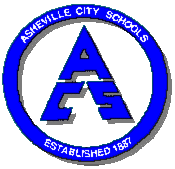 |
Find an Expert for Your Class
Select a topic that your students have an especially hard time
grasping.
Think of a person or profession that might have information that would be
helpful and motivating for your students.
Decide on a strategy for find this person or profession. Use one or more
of the strategies describe in the preceding pages or create your own strategy.
Perform the strategy to identify a person to contact. Then compose an
e-mail message that compellingly invites the person to help your class in some way would
be valuable to you, and not infringe on his or her time.
|
|
 |
Join a Professional Education Community
If you are not already a member of an Internet Mailing list, find
one and join it.
Compose a message of introduction to the list. In the message:
- Describe aspects of yourself and your profession that are especially
relevant to this online community
- Make the case that you have something to add to the list
- Make the case that the other list members can add to your work as a
teacher
Monitor the list. As you receive messages that would be especially
interesting to other teachers in your school or in you professional circle, forward the
message to those educators.
|
|
 |
Reach Out to Another Classroom
Think of a way that another class someplace in the world might
collaborate with your class to better learn a topic or skill.
Use Web66 to locate a number of classes in that country or state.
Compose an e-mail message introducing yourself and the idea that you have
for collaboration. Remember that your e-mail message is an advertisement.
|
|
 |
Looking for Online Projects
Go to the Projects Registry on the Global School House web
site.
Scan through projects posted by teachers and find an example for each of
the types of projects described by Dr. Judi Harris.
- "Keypals"
- Global Classrooms
- Electronic "Appearances"
- Impersonations
- Virtual Gatherings
|
 |
Establishing Your Own Online Educational Community
Think of a community of teachers with whom you are a
member and who would benefit from using a mailing list.
Go to Egroups, establish an account, and set up a mailing list for your
community.
Enter the e-mail addresses of as many members of that group that you can
think of and include them in an invitation to join the list.
|
 |
Creating a Meeting Place for Teachers and Students
Think of a small community of educators with whom you are
a member. It is best if they are located a distance from you.
Set up a chat room with a web page interface for the group.
Schedule a chat session with the group, and then compose and e-mail
invitation for all of you to meet at your web-based chat room at a specific time.
|
 |
Using Topic Oriented DirectoriesSelect a topic that your students have an especially hard time grasping.
Browse two of the topic oriented directories listed above for web
pages/sites on that topic.
Invent a strategy for using one of the web pages/sites or information
from one of the pages to help your students learn.
Perform the strategy in your class or with a small group of students and
report your experience to the Beyond the Basics Internet mailing list. (see the online
handouts) |
 |
Using Search Engines
Select a topic that your students have an especially hard time
grasping.
Use two of the search engines above to find web pages/sites that include
information on that topic.
Invent a strategy for using one of the web pages/sites or information
from one of the pages to help your students learn.
Perform the strategy in your class or with a small group of students and
report your experience to the Beyond the Basics Internet mailing list. (see the
online handouts)
|
 |
Using Net-Smarts
Select one of the units that you teach.
Use the S.E.A.R.C.H. model to locate resources on the Internet that you
can integrate into your unit.
Scan resources, look for those that will add to your knowledge about the
topic, as a teacher. Also look for types of information resources that you did not expect.
Invent new strategies for teaching that utilize the unanticipated
information resources. Report these strategies on the Beyond the Basics Internet
mailing list. (see the online handouts)
|
 |
Making Goals-based Assignments
Select three significant assignments that you give your students
each year.
Think about the assignments and invent a way that they might be adapted
so that they include a student identifiable goal, something that the student trying to
achieve.
Report your assignments and goals to the Beyond the Basics
Internet mailing list. (see the online handouts)
|
 |
Using Information Raw
Materials for Teaching & Learning: Part I
Select one of the web sites above that contains content that is
related to something that you teach.
Invent a strategy for moving the information into an
information-processing tool (word processor, spreadsheet, etc.) and manipulating the
information in some way that would help your students learn.
Perform the strategy and use the technique in your class.
Report your experience on the Beyond the Basics mailing list. (see
online handouts)
|
 |
Using Information Raw
Materials for Teaching & Learning Part II
Select one of the web sites above that contains content
that is related to something that you teach.
Invent a strategy for moving the information into an
information-processing tool (word processor, spreadsheet, etc.) and manipulating the
information in some way that would help your students learn.
Perform the strategy and use the technique in your class.
Report your experience on the Beyond the Basics mailing list. (see
online handouts)
|
|
|
|

